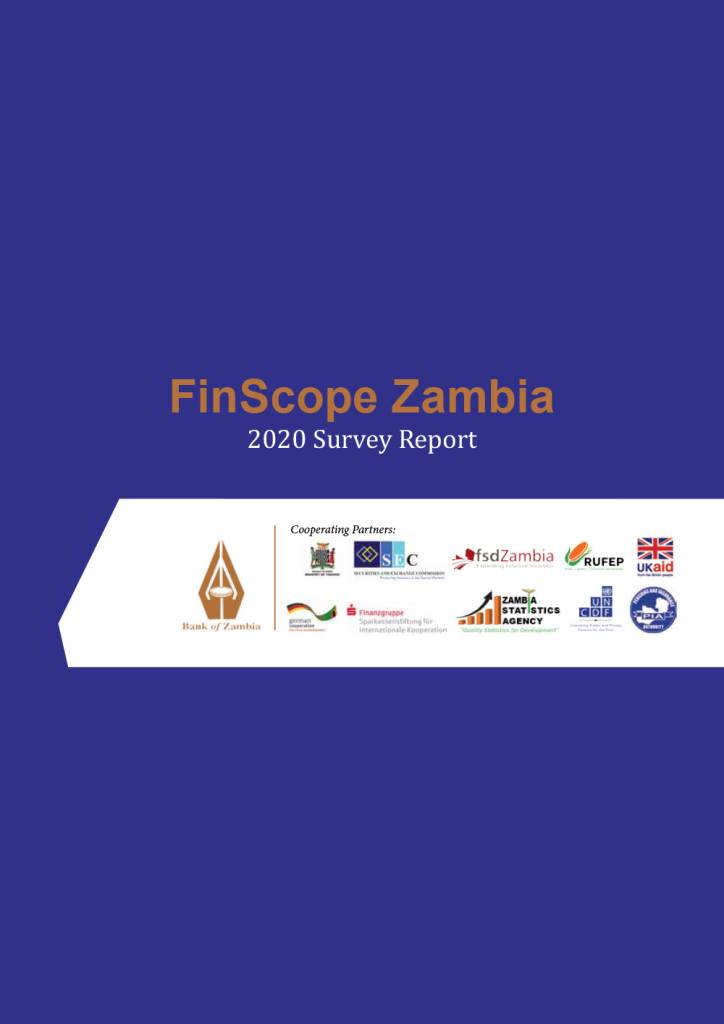Executive Summary
The vision for financial inclusion in Zambia is to have all citizens enabled with access and usage of a wide range of affordable financial products and services that meet their needs. This will facilitate income-generating activities, build financial security and ultimately enhance the quality and well-being of the population. Addressing financial inclusion is therefore important as a means of uplifting the livelihoods of the poor and vulnerable societies, particularly in rural areas. In this regard, the National Financial Inclusion Strategy (NFIS) targets to increase the level of financial inclusion to 80 percent and the level of formal financial inclusion to 70 percent by 2022.
The objectives of the FinScope 2020 Survey included providing information for:
- Assessing the financial landscape since the last survey in 2015;
- Measuring the level of financial inclusion in the country; and
- Developing responses to the needs of the population by identifying the gaps and barriers in the financial sector as well as stimulating innovations in product design and digital financial services.
The FinScope 2020 Survey also added four new dimensions to capture information on financial literacy, financial health, climate change and the effects of the COVID-19 Pandemic.
A response rate of 98.4 percent was achieved from the sample of adults aged 16 years and above in the 10 provinces of Zambia. The survey results indicated that financial inclusion rose to 69.4 percent (6.6 million) out of a population of 9.5 million adults, from 59.3 percent (4.8 million) out of a population of 8.1 million, in 2015. Subsequently, the level of financially excluded adults decreased to 30.6 percent (2.9 million adults) from 40.7 percent (3.3 million adults) recorded in 2015. This reduction in financially excluded adults was largely as a result of policy reforms and interventions by Government, and other financial sector stakeholders that had a positive influence on the uptake of digital financial products and services. This milestone was achieved despite a general slowdown in economic activity



